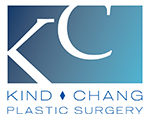Facial Rejuvenation : Rhinoplasty

This is a 40-year-old male who always wanted to change the appearance of his nose. He underwent open rhinoplasty.
Pictures Taken: 3 weeks post-op
You may be a candidate for nose reshaping (rhinoplasty) if you have a nose that is cosmetically unattractive or does not “fit” with other facial features. Rhinoplasty may also be indicated for an abnormal appearance of the nose as a result of birth defects, injury, or disease. Nose reshaping is intended to produce a more attractive nasal shape and/or a nose in better proportion to other facial features. Rhinoplasty is done on an outpatient basis under sedation, and local or general anesthesia. Your plastic surgeon will decide which of the following techniques should be used:
STANDARD RHINOPLASTY: Incisions are made inside the nostrils. The nasal bones, cartilage, and soft tissues are reshaped to improve the external contour.
OPEN RHINOPLASTY: Frequently used for difficult or larger noses. Involves one external incision across the columella (strut between the nostrils). Bones, cartilage, and soft tissues are reshaped under direct vision.
TIP-PLASTY: If only the nasal tip is abnormal, it may be corrected with either a standard or external (open) approach. Large nostrils may be reduced through tiny incisions at the outer base of the nostrils with either type of rhinoplasty.
DISCLAIMER: Before and after results are NOT a guarantee that your results will be the same or similar. Each patient’s results will be different. Your results will vary from other patient’s results.





